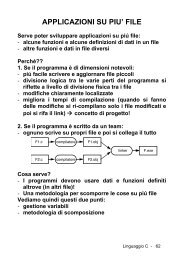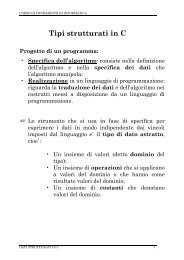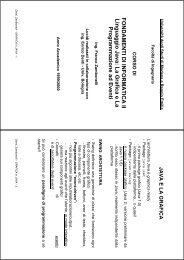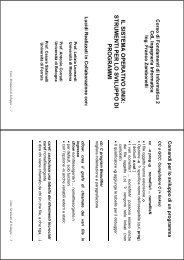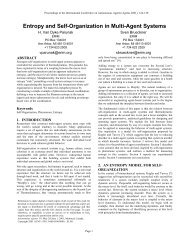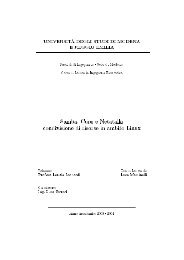Small World Networks
Small World Networks
Small World Networks
Create successful ePaper yourself
Turn your PDF publications into a flip-book with our unique Google optimized e-Paper software.
¡<br />
¡<br />
¡<br />
Random <strong>Networks</strong><br />
Very simple to build<br />
l Given a set n of vertices<br />
l draw M edges each of which<br />
connect two randomly<br />
chosen vertices<br />
For a k-regular random<br />
networks<br />
l For each i of the n vertices<br />
l Draw k edges connecting i<br />
with k other randomly<br />
chosen vertices<br />
l Avoiding duplicate edges<br />
and “self” edges<br />
Note that the concept of<br />
dimension lose meaning<br />
n=16, k=3<br />
27<br />
Properties of Random <strong>Networks</strong><br />
¡ For large n<br />
l Each node has k neighbors<br />
l Each connecting it to other k neighbors, for a<br />
total of k 2 nodes<br />
l And so on…<br />
l In general Λi(v)=∑i=0,n|Г(v)|≈k i for any v<br />
¡ Please note that for large n, the probability of<br />
cycles reducing the above estimate is very small<br />
for small i, while such cycles are intrinsic in<br />
lattices<br />
¡ In other words, the neighbours of a node v<br />
typically have other neighbours which, in turns,<br />
are unlikely to be neighbors with each other, in<br />
fact<br />
¡ The clustering factor is low and is about<br />
l γ = k/n<br />
28<br />
14




